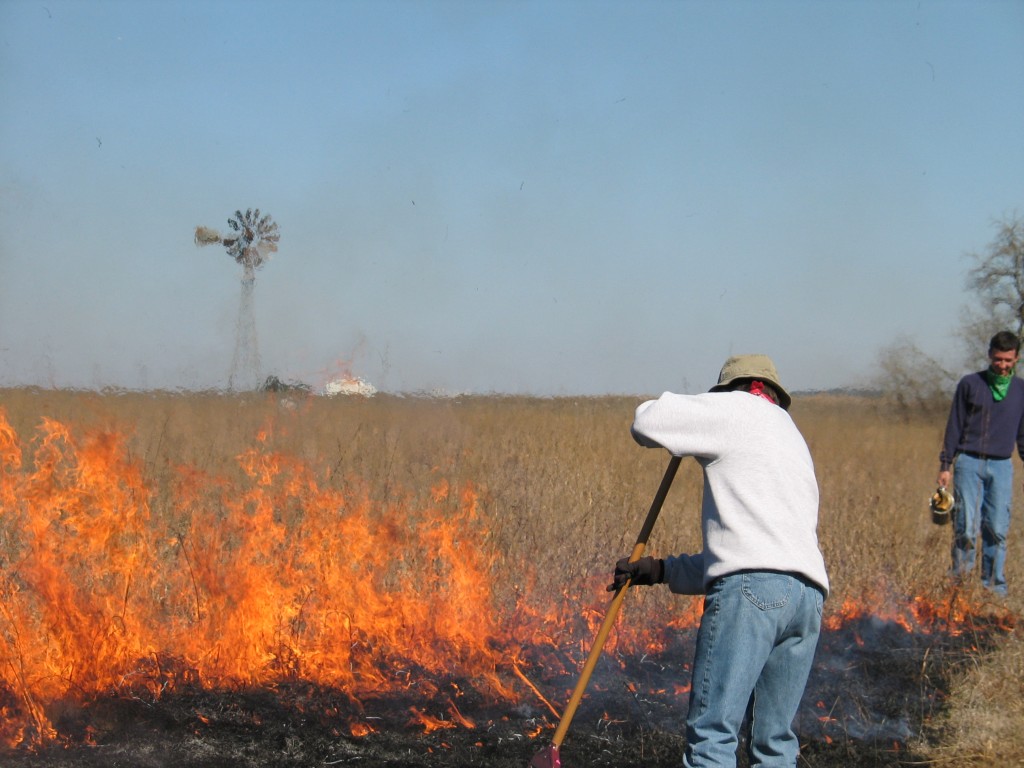
Over time, our native landscape has been sustained by two types of prairie disturbance:
Fire
Fires, ignited by lightning or set intentionally by Native Americans, spread for miles. They burned until rains fell or rivers stopped them.
Grazing
Bison, elk, deer, and even grasshoppers grazed the prairies year-round and feasted on the lush green growth that emerged from the ashes.
These processes of disturbance occurred every few years and prevented establishment of woody plants. Since the last ice age 10,000 years ago, flammable grasses fueled fires and preserved the prairie as the dominant ecosystem of the Great Plains.
But the prairie has changed – agriculture and development have fragmented the landscape. Fires no longer carry long distances and must be prescribed by humans. Area-restricted cattle have replaced large herds of nomadic bison and mowers simulate grazing. Today, we must use carefully-timed cycles of fire and/or cutting to maintain prairie plant communities.
